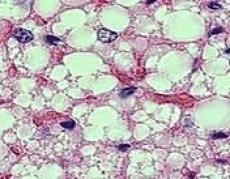New publications
A person's social activity promotes weight loss
Last reviewed: 30.06.2025

All iLive content is medically reviewed or fact checked to ensure as much factual accuracy as possible.
We have strict sourcing guidelines and only link to reputable media sites, academic research institutions and, whenever possible, medically peer reviewed studies. Note that the numbers in parentheses ([1], [2], etc.) are clickable links to these studies.
If you feel that any of our content is inaccurate, out-of-date, or otherwise questionable, please select it and press Ctrl + Enter.

Social activity promotes the transfer of fat reserves into brown adipose tissue, in which excess fat is quickly and promptly burned.
There are two types of adipose tissue in our body - white fat and brown fat. White adipose tissue accounts for the largest part; its cells can be compared to a drop of fat covered with a thin layer of cytoplasm. Obesity and excess weight are associated with an increase in the content of white adipose tissue.
For a long time, all that was known about brown fat was that it was found exclusively in newborns. Its cells contain an increased number of mitochondria, which is why brown adipose tissue acquires its characteristic color. Intensive burning of lipids with the release of heat occurs in the mitochondria of brown fat, and the main function of brown adipose tissue was long considered to be the adaptation of the newborn's body to new environmental conditions. But not long ago, convincing evidence appeared that brown fat is also present in adults. In particular, its proportion in the human body increases in cold climates.
It is obvious that if we learn to shift the proportion between the two types of adipose tissue in favor of brown, this will help solve the problem of obesity. As it turns out, this does not require moving to the Arctic latitudes: it is enough to activate your own social life.
Researchers from Ohio University (USA) conducted the following experiment: some mice lived as solitary homebodies, while other rodents were kept in groups of 15–20 individuals in a single “communal apartment” equipped with labyrinths, burrows, tunnels, wooden toys, etc. Although both were fed the same diet, differences in body weight quickly emerged. It turned out that the proportion of brown adipocytes in adipose tissue increased significantly in mice living in a group. But, as the authors of the study emphasize, the living conditions of the groups differed not so much in the possibility of physical activity as in the level of sociality. A group home for 15–20 people was designed in such a way that the mice constantly encountered and communicated with each other. It was live “face to face” communication, as scientists claim in the journal Cell Metabolism, that caused fat in the body to be pumped into brown adipose tissue and burned effectively.
The obese mice lost up to half of their excess weight after being transferred to a socially active environment. Moreover, under such conditions, even a fatty diet was powerless: the intensively socialized rodents were extremely reluctant to gain excess weight. The animals' elevated body temperature indicated that brown fat burns excess lipids quickly and in a timely manner.
The researchers were able to establish that the increase in the proportion of brown adipose tissue is triggered by the brain-derived neurotrophic factor (BDNF). The content of this protein in the brain increases with social stimulation, one of its functions is to stimulate the growth of nerve cells. Most likely, the same connection between the brain-derived neurotrophic factor and brown fat exists in humans. If so, this opens up a new, non-invasive and generally non-drug method of treating obesity.
According to researchers, maintaining extensive social contacts and "live communication" creates a favorable stress for the body, which works both to improve brain function and to remove excess fat tissue from the body. But the effect will depend not on the number of "friends", but on the depth and elaboration of each social contact. Purely formal communication with even a hundred acquaintances will literally not benefit either the mind or the heart. Not a very happy reservation for those who hoped to get rid of excess weight with the help of a friend list of a thousand "friends" on the Facebook network...

 [
[